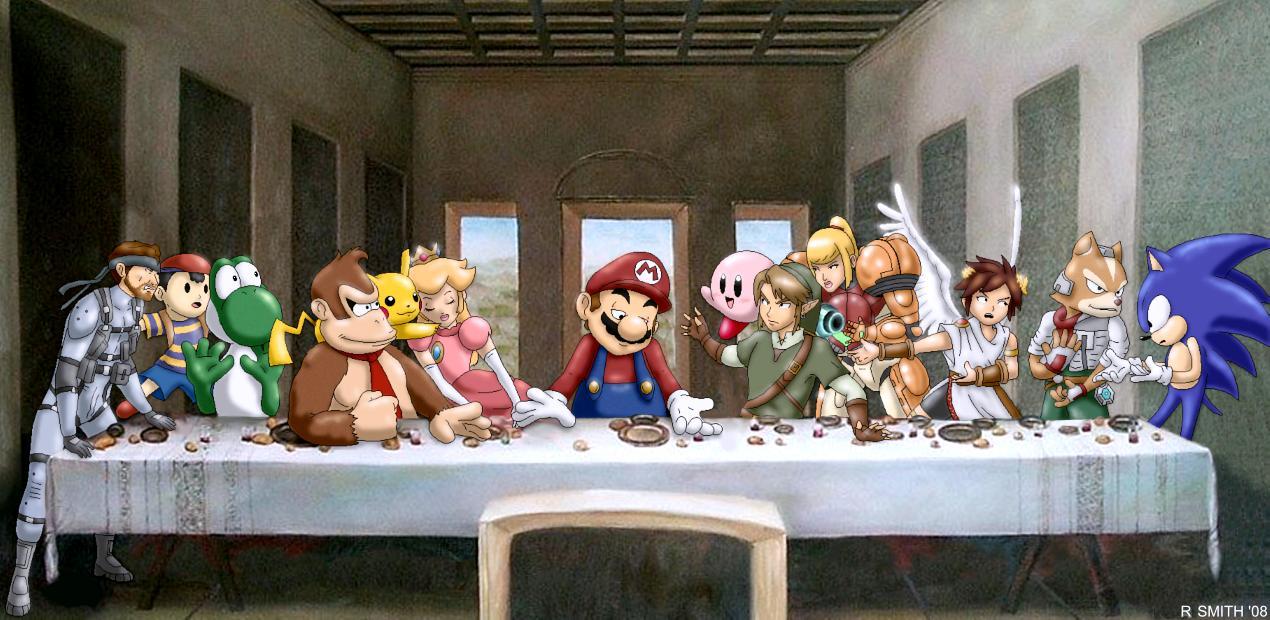Are Video Games Art?
Beethoven’s Moonlight Sonata, Leonardo da Vinci’s paintings, the statue of David – all of these are considered art. Wonderful works of art, to be more precise. Stories, scripts, films, compositions/songs, paintings, architectures, and more are commonly considered art. But technically, so is graffiti and that finger painting of a turkey you made in kindergarten.

So for the purposes of this article, when we discuss art, let it be understood that the implication is high art. High art is art considered to have value in some way, perhaps by being beautiful to look at or depicting some message or moral about the human condition. This allows us to ask the question – are video games art?
What is Art?
In order to fully understand this debate, we need to do what has seldom been done before and fully understand what, exactly, art is. After all, there’re no imperial units for measuring art. I can’t pour 10 millimeters of art into a beaker or weigh 2 kilograms of art on a scale. Not yet, anyway.
My friend Merriam-Webster defines art as being something created “with imagination and skill” while being beautiful or expressing “important ideas or feelings.” But I believe that definition overlooks a major part of the equation: the audience. Part of what makes high art so revered is that it affects us. We can look at it or read it or view it and come away with something new, whether that be an appreciation for outward beauty or a new philosophy on the meaning of life (it’s 42). Art doesn’t describe an objective core. Aristotle and Plato saw art as an imitation of nature, but the experiences we have, though relatable, are rarely the same. Art is a relative spectrum, and beauty is in the eye of the beholder. One person may describe the Sistine Chapel as art, and another might claim The Room was a brilliant film. Even Twilight and Justin Bieber have fanbases. Heck, I’ve been in an art museum where one of the cordoned-off exhibits was three cardboard boxes stacked on each other, clearly representing wealth disparity and income inequality in America.
With that relativity in mind, let’s press the start button.
Video Games Are Not Art
In a Newsweek article dating way back to 2000, Jack Kroll wrote that video games, though entertaining, were incapable of transmitting “the emotional complexity that is the root of art.”

Pictured above: emotional complexity.
A game like Pong, though enjoyable, is not something I would call high art. It’s simple, not particularly beautiful, and certainly devoid of emotional complexity. And there are many people who extend these criticisms to all games. Famous film critic Roger Ebert has stated as recently as 2010 that “video games can never be art.” There are numerous games out there that would support this position. Consider the Lord of the Rings games for the Gamecube. How can something be art if it’s just a watered-down version of the books and movies? They could easily be called entertainment but art? Arguably not.
Ebert raised another interesting division between video games and art when he pointed out that games are competitive. They are winnable. No matter how many times you have a staring contest with the Mona Lisa, you will always lose. Like the protagonist of SCP Containment Breach, you will always blink. I apologize if that ruined your dreams. And for that weeping angel behind you.
But back to Ebert’s point – he’s correct. Video games are, in general, winnable. They have an objective. Games like Shadow of the Colossus, Skyrim, and (coughMinecraftcough) may be gorgeous and breathtaking, like a statue or a shot in a movie, but they are still competitive. Sure, we might look at people who have a knack for certain talents, like the art of lying, the art of love, the art of figure-skating – but again, our discussion centers around what is popularly considered high art.
Video Games Are Art
On the other hand, movies were once considered unworthy of the title of art. They were seen as escapism or mindless entertainment and, at the time, many were. People doubted movies could affect them in the same way that a painting or a book could. Nowadays, few would argue that movies are not art. They’re visual mediums that relay gripping stories concerning the human condition. They create memorable characters and immerse us in a fictional storyline using relatable themes and motifs. Movies grew into the big screen. Can video games do the same?
As they evolved, video games grew less and less like Pong and more and more like a movie. Cutscenes became more prevalent in games, giving them a cinematic quality and allowing them to impart the same sort of morals and motifs movies do. Games today are expected to have a complex and meaningful storyline with developed characters, just like movies and books. Consider a game that masterfully fulfills this, a game with a brilliant and complex story weaving in and out of alternate universes with the one girl who can see what’s behind all the doors – Doctor Who Bioshock Infinite.
In that sense, video games have begun acting very similarly to movies. Both develop stories, characters, and themes regarding good and evil or the human condition. Both seek to impart some lesson or moral upon their audience, even if we don’t know exactly what it is. Even games about an Italian plumber addicted to mushrooms and curb-stomping midgets in order to rescue a princess from a turtle-dragon have begun displaying more intriguing narratives.
Additionally, there are games where winning is not the key objective. It might not even be important at all. Consider games like Minecraft, the Sims, and even Animal Crossing to an extent. These games center themselves on the player; it is precisely because players can interact with or create their desired world that these games succeed. Choice is utilized as an asset rather than a liability. These games are not hindered by being playable; they are enhanced because of it.
Conclusion
There is little doubt that video games are evolving. Outside of being retro, because the half-life of everything on the Internet is about thirty seconds, if a game like Pong were released today, it wouldn’t be heralded as a masterpiece. Even Call of Duty now features a basic good versus evil storyline.
Art is a highly subjective matter. Perhaps the critics are correct and video games are not high art. Or perhaps the proponents are right, and video games do deserve a place at the table of culture. Whatever the case, they’re not something we can just hit the reset button on. Video games are here to stay, and they’re progressing further and further with each passing moment. Even if video games are not high art, it must be acknowledged that they at least have the potential to become so. Maybe they are the Bowser car in Mario Kart, riding along in 8th place as movies, books, music, paintings, sculptures, and more swoop ahead of them.
But they have a blue shell.

